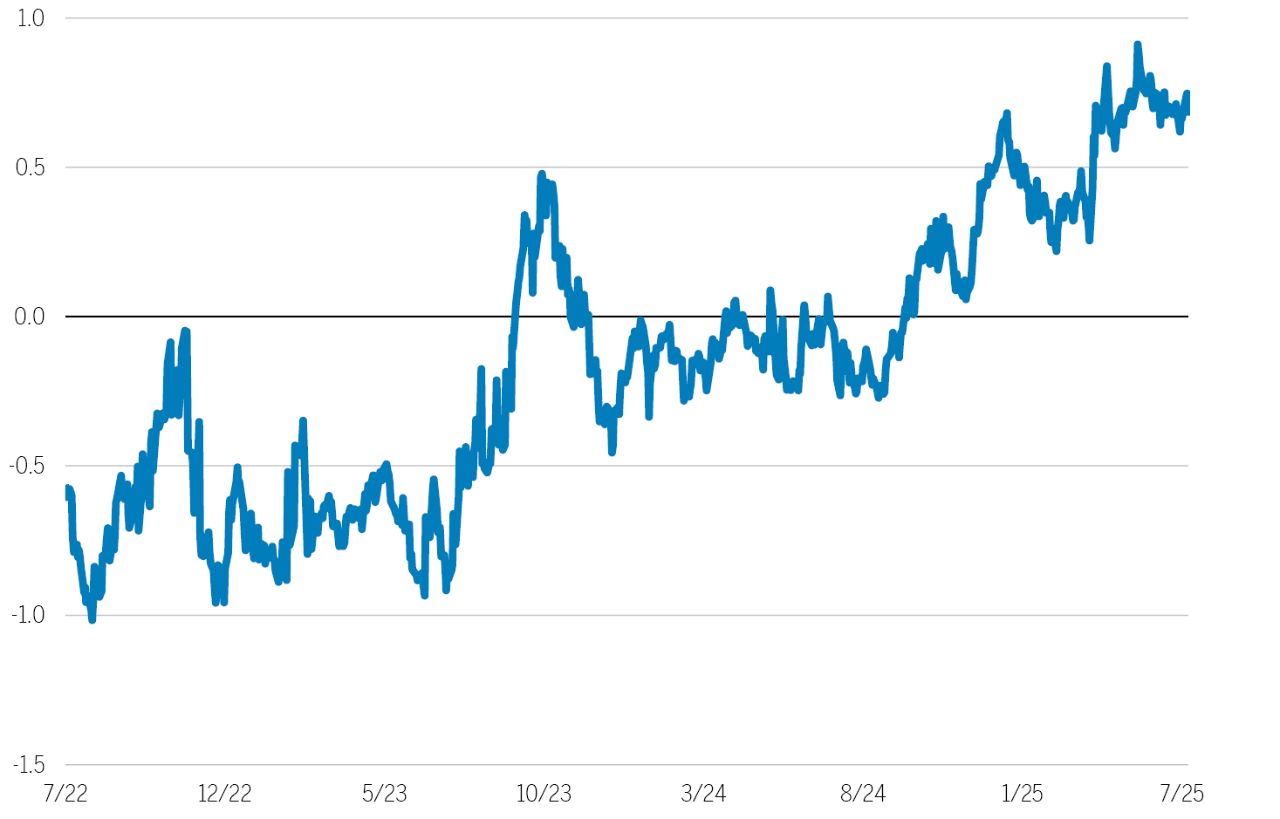The One Big Beautiful Bill Act (OBBBA) is now law. Considering the bill’s heft—almost 1,000 pages—the long-term economic and market implications are still being weighed and debated. I see two initial takeaways that allocators can incorporate into their investment decisions.
First, I expect the OBBBA to be a net positive for economic growth and company earnings over the next 12 months due to its pro-business stance. Second, the clear negative for markets is the postponement of meaningful spending cuts. According to the Congressional Budget Office, this will put US debt on a trajectory toward 125% of GDP by 2034—a level that could increase long-term US Treasury yields and further weaken the US dollar.
Front-Loaded Benefits
The OBBBA reinstates and/or makes permanent changes that should benefit businesses and boost economic growth, including:
- Increasing the bonus depreciation rate for qualified property (e.g., certain machinery and equipment) from 40% to 100%;
- Providing an immediate ability to deduct research and development expenses; and
- Returning to a more generous EBITDA-based1 limit for interest deductibility on loans.
Combined, these and other changes may help increase cash flow for companies and encourage investment spending. Independent estimates suggest these measures could boost growth in the medium term by as much as 0.7%. However, as I explain below, I see potential for the effects to be felt sooner—and to a greater degree.







